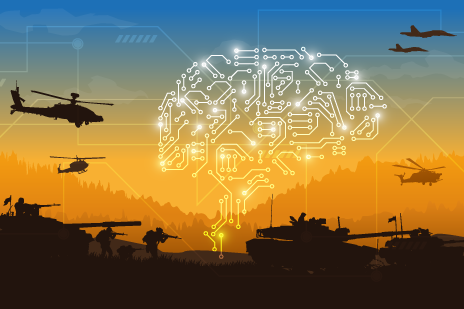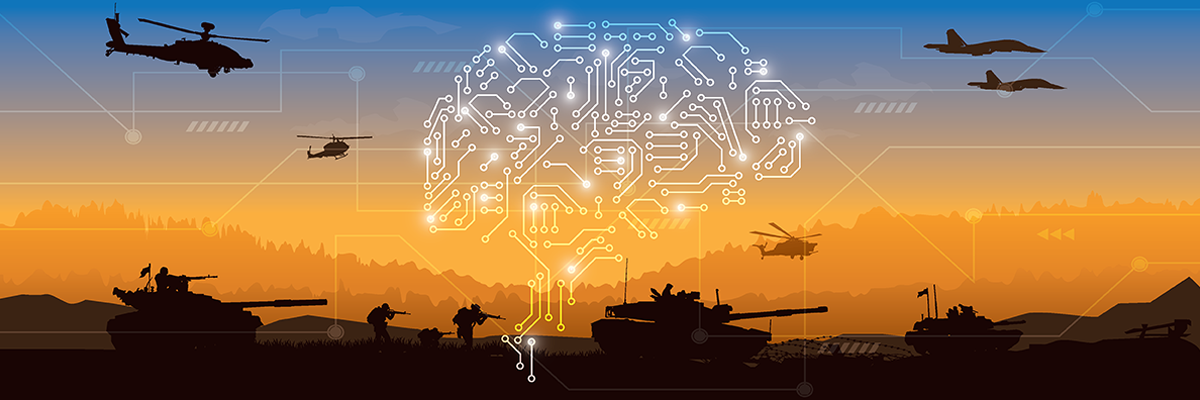
Artificial Intelligence (AI) has been gaining traction for military, aerospace, and defense purposes in recent deep learning fundamentals, computers can recognize sophisticated patterns and characteristics of tasks, simulating human cognitive intelligence. Incorporating this with network edge computing enables the possibility of implementing the necessary computational tools and capabilities where they’re needed the most: at the farthest reaches of a network on the battlefield’s edge.

Figure 1: The modern battlefield will soon be full of AI-enabled systems
What is Edge Computing?
The concept of edge computing describes how data can be processed by distributed local computational resources that are physically close to the sensors collecting the data. In contrast to cloud computing, edge computers remove the dependency on the processing power away from data centers and the need for connectivity to the Internet. This enables immediate computational power to devices and platforms that require it, such as drones, manned vehicles, or smart weapon systems.
With increased computational capabilities at the edge of the network, artificial intelligence, traditionally consigned to data centers, can be enabled for warfighters and mission-critical equipment and systems. What’s more, leveraging operations through the network edge offers advantages when compared to cloud computing. With the right tools in place, edge computing provides increased bandwidth and security for data transfers. It also reduces latency as there is no need for data transitioning back and forth from remote servers.